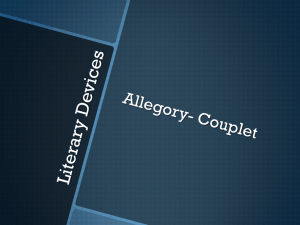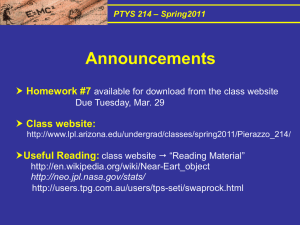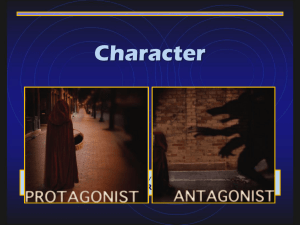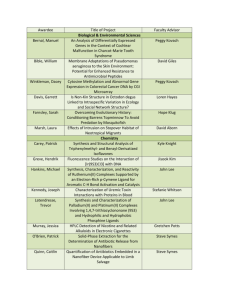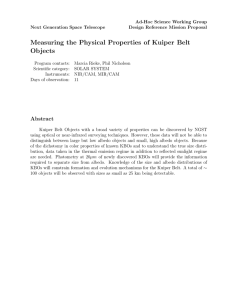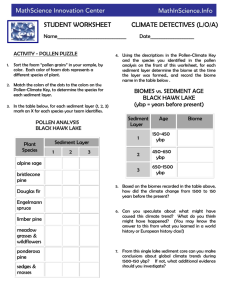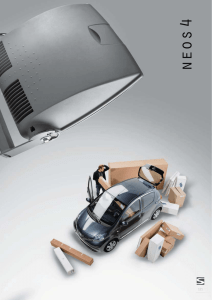Observations of faint moving objects: KBOs, asteroids, NEOs
advertisement
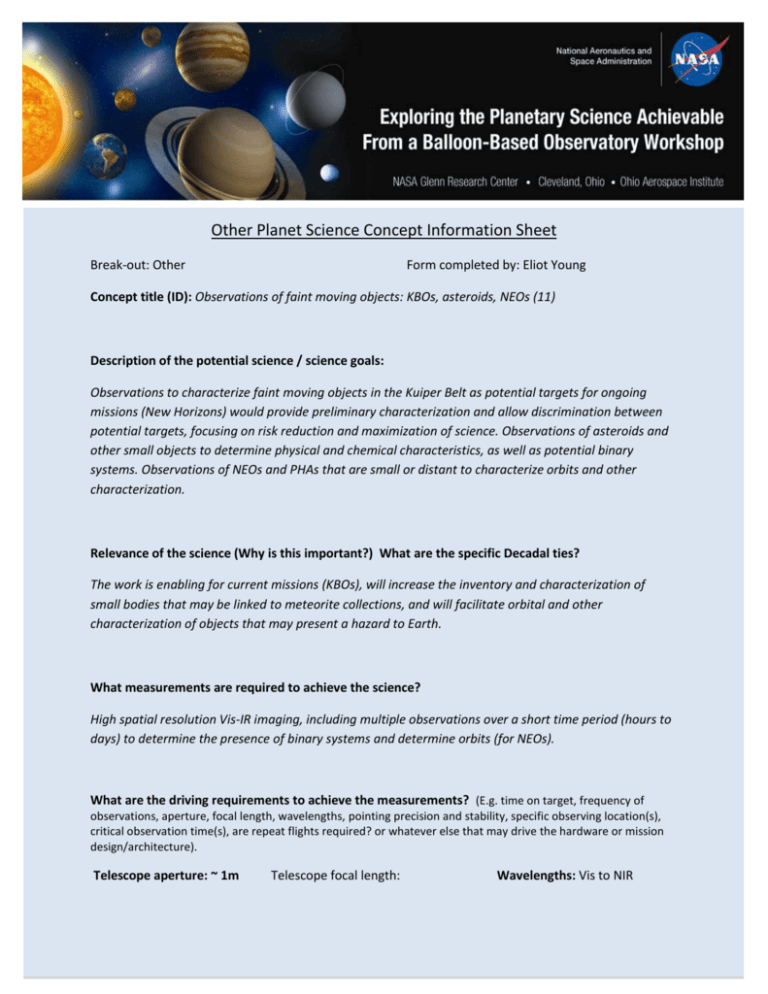
Other Planet Science Concept Information Sheet Break-out: Other Form completed by: Eliot Young Concept title (ID): Observations of faint moving objects: KBOs, asteroids, NEOs (11) Description of the potential science / science goals: Observations to characterize faint moving objects in the Kuiper Belt as potential targets for ongoing missions (New Horizons) would provide preliminary characterization and allow discrimination between potential targets, focusing on risk reduction and maximization of science. Observations of asteroids and other small objects to determine physical and chemical characteristics, as well as potential binary systems. Observations of NEOs and PHAs that are small or distant to characterize orbits and other characterization. Relevance of the science (Why is this important?) What are the specific Decadal ties? The work is enabling for current missions (KBOs), will increase the inventory and characterization of small bodies that may be linked to meteorite collections, and will facilitate orbital and other characterization of objects that may present a hazard to Earth. What measurements are required to achieve the science? High spatial resolution Vis-IR imaging, including multiple observations over a short time period (hours to days) to determine the presence of binary systems and determine orbits (for NEOs). What are the driving requirements to achieve the measurements? (E.g. time on target, frequency of observations, aperture, focal length, wavelengths, pointing precision and stability, specific observing location(s), critical observation time(s), are repeat flights required? or whatever else that may drive the hardware or mission design/architecture). Telescope aperture: ~ 1m Telescope focal length: Wavelengths: Vis to NIR Pointing stability: 1 arcsec required Required time on target: ~1 – 2 days if multiple imaging Are there other ways to achieve this science, and if so, why would a balloon platform be preferable? The ability to work in the NIR where many small objects have higher brightness is a bonus over ground based observations. The potential for a campaign mode to detect and select among potential KBOs makes this platform desirable. In all cases, more study is needed to determine the relative merits of the balloon platform (S/N ratio etc.) over ground based observations. What are the potential observation targets? KBOs, NEOs, PHAs, Asteroids What planetary science disciplines would this involve? PG&G; Origins Point of contact for follow-on questions (Name and contact info) Eliot Young, SwRI

